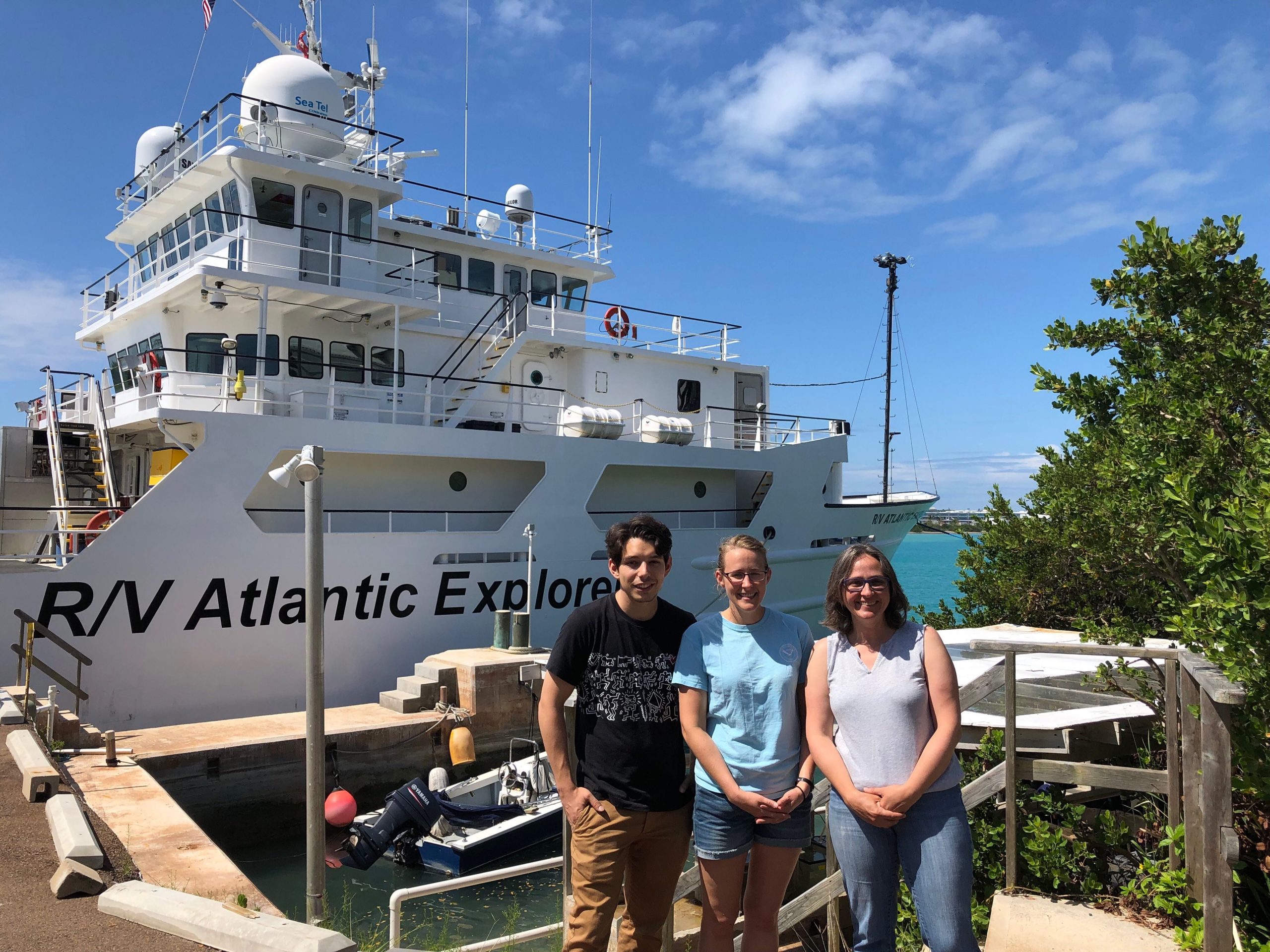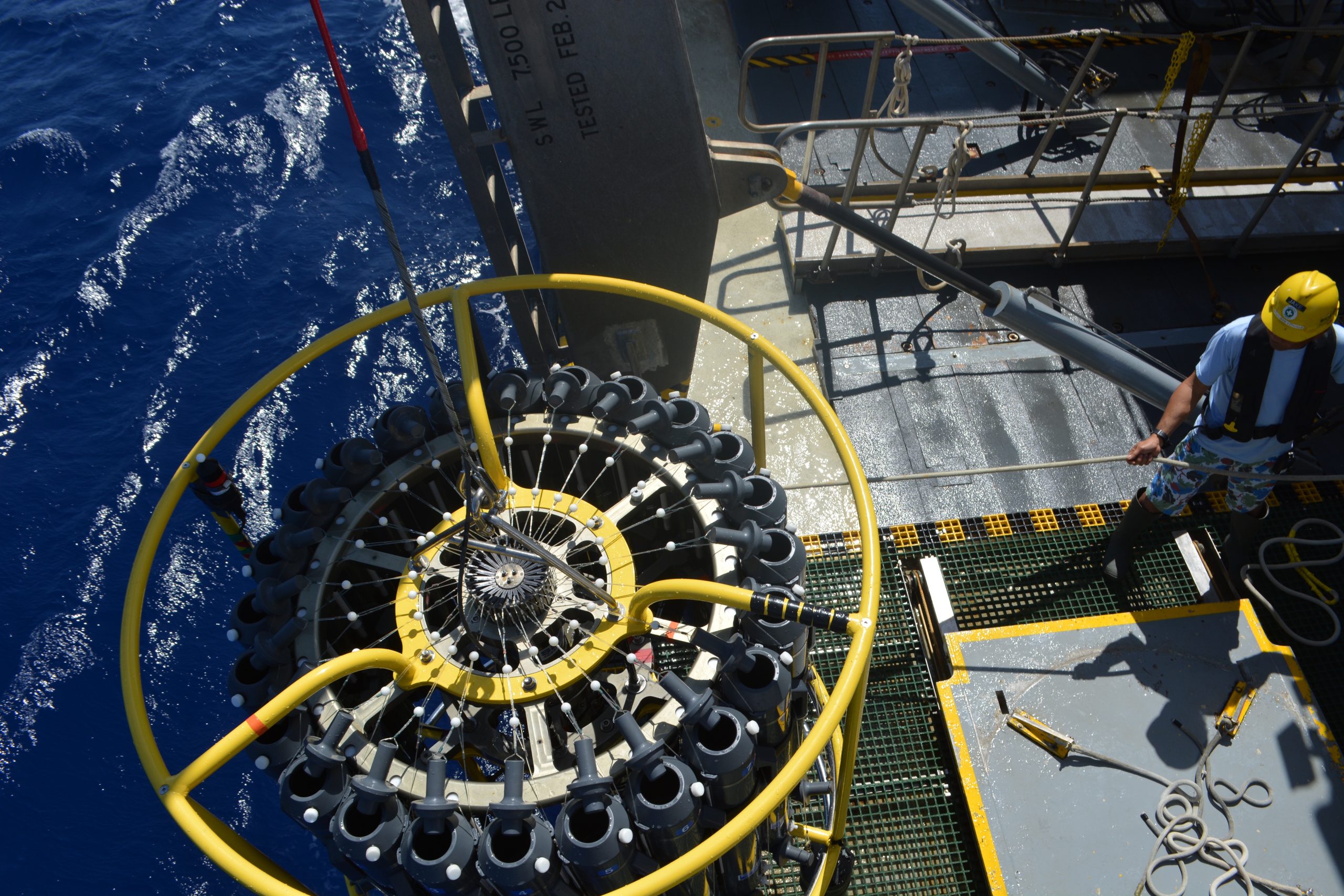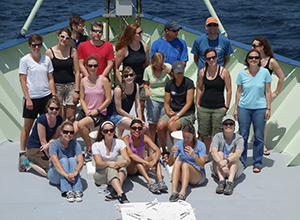Organic matter in the marine environment
More than three-quarters of dissolved organic matter in the ocean is found at depths greater than 1000 m. This dissolved organic matter can serve as a carbon and energy source for marine microorganisms. Conversely, the marine microorganisms may release dissolved organic matter. The interplay between these two processes is complex. We work in a variety of marine ecosystems to consider the impact of chemical and biological processes on organic matter in the marine environment.
The majority of our field research is conducted as part of the BIOS-SCOPE project. This collaborative project involves scientists from the Bermuda Institute of Ocean Sciences (BIOS), University of California - Santa Barbara, Oregon State University, Woods Hole Oceanographic Institution, GEOMAR Helmholtz Centre for Ocean Research Kiel, Technical University Berlin, the University of Miami, and the University of Exeter in England. Collaboratively, we seek to understand what chemical compounds microbial communities produce, transform and leave behind, including through community interactions with viruses and zooplankton. The field component of this research takes place off Bermuda, while our laboratory analyses will be done at the WHOI FT-MS facility.
In addition, through projects led by Amy Apprill at WHOI, we have contributed to understanding of metabolites in coral reef environments.
Recent publications
Longnecker, K., M. C. Kido Soule, G. J. Swarr, R. Parsons, S. Liu, W. M. Johnson, B. Widner, R. Curry, C. A. Carlson and E. B. Kujawinski (2024). Seasonal and daily patterns in known dissolved metabolites in the northwestern Sargasso Sea. Limnology and Oceanography. 69(3):449-466 (link to publication)
Johnson, W. M., M. C. Kido Soule, K. Longnecker, M. P. Bhatia, S. J. Hallam, M. W. Lomas and E. B. Kujawinski (2023). Particulate and dissolved metabolite distributions along a latitudinal transect of the western Atlantic Ocean. Limnology and Oceanography 68(2): 377-393 (link to publication)
Weber, L., M. Kido Soule, K. Longnecker, C. C. Becker, N. Huntley, E. B. Kujawinski and A. Apprill (2022). Benthic exometabolites and their ecological significance on threatened Caribbean coral reefs. ISME Communications 2(2): 101 (link to publication)
Liu, S., K. Longnecker, E. B. Kujawinski, K. Vergin, L. M. Bolaños, S. J. Giovannoni, R. Parsons, K. Opalk, E. Halewood, D. A. Hansell, R. Johnson, R. Curry and C. A. Carlson (2022). Linkages among dissolved organic matter export, dissolved metabolites, and associated microbial community structure response in the northwestern Sargasso Sea on a seasonal scale. DOI:10.3389/fmicb.2022.833252. Frontiers in Microbiology. (link to publication)
Maas, A. E., S. Liu, L. M. Bolaños, B. Widner, R. J. Parsons, E. B. Kujawinski, L. B. Bercial and C. A. Carlson (2020). Migratory zooplankton excreta and its influences on prokaryotic communities. Frontiers in Marine Science. 7: 573268 (link to publication)
Weber, L., M. Armenteros, M. C. Kido Soule, K. Longnecker, E. B. Kujawinski and A. Apprill (2020). Extracellular reef metabolites across the protected Jardines de la Reina, Cuba reef-system. Frontiers in Marine Science. 7:1063 (link to publication)
Longnecker, K., L. Oswald, M. C. K. Soule, G. A. Cutter, and E. B. Kujawinski. (2020). Organic sulfur: a spatially variable and understudied component of marine organic matter. Limnology and Oceanography Letters. 5:305-312 (link to publication)
Liu, S., R. Parsons, K. Opalk, N. Baetge, S. Giovannoni, L. M. Bolaños, E. B. Kujawinski, K. Longnecker, Y. Lu, E. Halewood and C. A. Carlson (2020). Different carboxyl-rich alicyclic molecules proxy compounds select distinct bacterioplankton for oxidation of dissolved organic matter in the mesopelagic Sargasso Sea. Limnology and Oceanography 65:1532-1553 (link to publication).
Johnson, W. M., K. Longnecker, M. C. Kido Soule, W. A. Arnold, M. P. Bhatia, S. J. Hallam, B. A. S. Van Mooy and E. B. Kujawinski (2020). Metabolite composition of sinking particles differs from surface suspended particles across a latitudinal transect in the South Atlantic. Limnology and Oceanography 65:111-127 http://doi.org/10.1002/lno.11255


